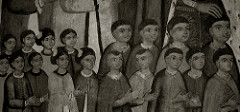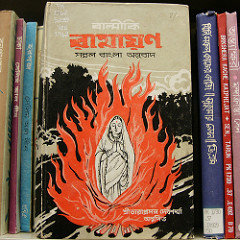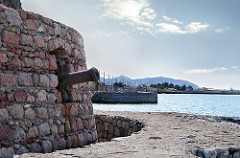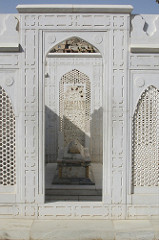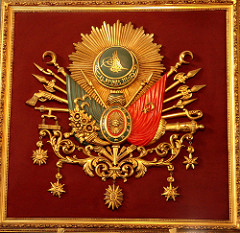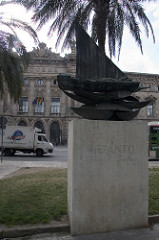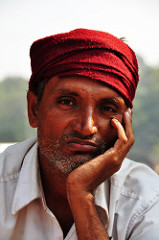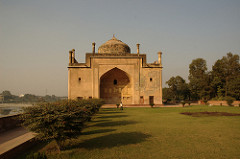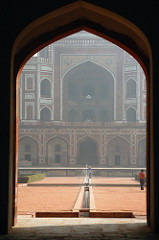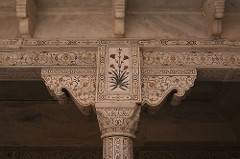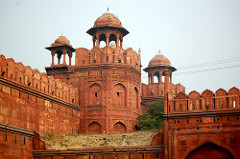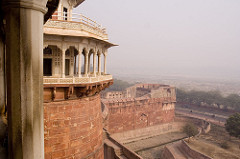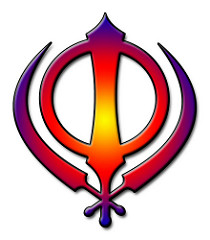Sick man of Europe
The phrase is used to describe economic poverty in a European country. This term was coined when the Ottoman empire was in decline and increasingly began to lose territory to the Europeans through defeats in battle. (Overstatement).
Sati
A ritual that required a woman to throw herself on her late husband's funeral pyre or burn herself. This was done gladly and if a woman didn't comply with this she would be disgraced.
Safavid Dynasty
Originally a Turkic nomadic group; family originated in Sufi mystic group; espoused Shi'ism; conquered territory and established kingdom in region equivalent to modern Iran; lasted until 1722. Disputed with Mughal Dynasty frequently because of Sunni-Shia split.
Babur
He founded the Mughal Empire in 1526 when he defeated the Lodi army and the Hindu warrior princes, he encouraged military buildup and arts, contributions: creation of a centralized government with ministries that controlled the provinces and introduction of a policy of religious toleration (unity with the Hindu princes), he introduced a new calendar, helped the poor, made an anti-alcohol campaign, and tried to improve the lives of women, was actually trying to raid in order to get other kingdom back.
Mughal Empire
An Islamic imperial power that ruled a large portion of Indian subcontinent which began in 1526, invaded and ruled most of Hindustan (South Asia) by the late 17th and early 18th centuries, and ended in the mid-19th century. Founded by Babur
Ottoman Empire
Islamic state founded by Osman in northwestern Anatolia ca. 1300. After the fall of the Byzantine Empire, was based at Istanbul (formerly Constantinople) from 1453 to 1922. It encompassed lands in the Middle East, North Africa, the Caucasus, and eastern Europe.
Osman
The ruler of the turks who began to build a new empire in the corner of Asia Minor. these turks became known as the Ottoman Turks
Mehmed II
Also called "The Conqueror", Murad's son, conquered Constaninople in 1453 and opened it to new citizens of many religions and backgrounds. The rebuilt city was renamed Istanbul.
Janissaries
Infantry, originally of slave origin, armed with firearms and constituting the elite of the Ottoman army from the fifteenth century until the corps was abolished in 1826.
Dhimmis
A person of a non-Muslim religion whose right to practice that religion is protected within an Islamic society, People of the Book: Christians, Jews, Zoroastrians
Vizier
Ottoman equivalent of the Abbasid wazir; head of the Ottoman bureaucracy; after 15th century often more powerful than sultan
Suleymaniye
Famous Ottoman mosque. Obelisks/minarettes. Built 1550's during reign of Suleyman, who also built resthouses, schools, gardens, and coffee houses. Designed by Sinam.
Suleyman
Ruled Ottoman Empire for 46 years and when it was at its height, he was also called "The Magnificent", spread the empire, many cultural interests, expanded military, millet system, devshirme system,
Golden Horn
Nickname for Constantinople (capital of Byzantine empire) because it was shaped like a horn and brought in lots of trade (money, gold) because of its access to the Mediterranean, Black, and Aegean seas
devshirme
'Selection' in Turkish. The system by which boys from Christian communities were taken by the Ottoman state to serve as Janissaries.
Battle of Lepanto
A naval battle fought between a Spanish and Venetian fleet and the German navy. The Spanish won. The battle meant that European navies had finally surpassed the Muslims. The Ottoman Turks could no longer challenge Europeans on international routes.
Sail al-Din
Early 14th century Sufi mystic; began campaign to purify Islam; first member of Safavid dynasty.
Red Heads
Name given to Safavid followers because of their distinctive red headgear.
Isma'il
Sufi commander who conquered the city of Tabriz in 1501; first Safavid to be proclaimed "shah" or emperor
Battle of Chaldiran
16th Century. The Safavid vs the Ottomans. Ottomans won, and this symbolized the two greatest world powers at the time clashing together, + religious war (Shiites Vs. Sunnis), determined modern day boundaries (Iran vs. Iraq)
Taj Mahal
Most famous architectural achievement of Mughal India; originally built as a mausoleum for the wife of Shah Jahan, Mumtaz Mahal
Abbas the Great
Safavid ruler from 1587 to 1629; extended Safavid domain to greatest extent; created slave regiments based on captured Russians, who monopolized firearms within Safavid armies; incorporated Western military technology.
Tahmasp I
1534-1576. Won the throne after Isma'il , rebuilt the Safavid dynasty. Brought Turkic chiefs under control. Longest reign in the Safavid dynasty.
Padishah
Safavid term used for king of kings
mullahs
Local mosque officials and prayer leaders within the Safavid Empire; agents of Safavid religious campaign to convert all of population to Shi'ism
imams
Shi'a religious leaders who traced their descent to Ali's successors.
Isfahan
Safavid capital under Abbas the Great; planned city exemplifying Safavid architecture.
Nadir Khan Afshar
Soldier-adventurer following fall of Safavid dynasty in 1722; proclaimed himself shah in 1736; established short-lived dynasty in reduced kingdom.
Akbar
Most illustrious sultan of the Mughal Empire in India (r. 1556-1605). He expanded the empire and pursued a policy of conciliation with Hindus. , son and successor of Humayan; oversaw building of military and administrative systems that became typical of Mughal rule in India; pursued policy of cooperation with Hindu princes; attempted to create new religion to bind Muslim and Hindu populations of India.
Humayan
Son and successor of Babur; expelled from India in 1540, but restored Mughal rule by 1556; died shortly thereafter
Jizya
Head tax paid by all non-believers in Islamic territories, Eliminated by Akbar during his reign, but reinstated by other rulers.
Din-i-Ilahi
Religion initiated by Akbar in Mughal India; blended elements of the many faiths of the subcontinent; key to efforts to reconcile Hindu and Muslims in India, but FAILED.
Purdah
the practice among Hindu and Muslim women of covering the face with a veil when outside the home
Aurangzeb
Mughal emperor in India and great-grandson of Akbar 'the Great', under whom the empire reached its greatest extent, only to collapse after his death, despotic ruler, whose strict laws led to divisions and decentralization of government in the Mughal Empire
Red Fort
The fortified structure built by the Mughal emperor in Delhi that served as the home of the imperial family of India under Shah Jahan.
Shah Jahan
Mughal emperor of India during whose reign the finest monuments of Mogul architecture were built (including the Taj Mahal at Agra)
Jahangir
Son of Akbar he was the "Grasper of the World." He married the Persian princess Nur Jahan, who really controlled the state affairs because he was a weak ruler. He was overthrown by his son Khusrau.
Mumtaz Mahal
Shah Jahan's wife who had a building named after her (Taj Mahal) , as he was only passinate about her and beautiful buildings,took an active political role in Mughal court;
Nur Jahan
Wife of Jahangir; amassed power in court and created faction of male relatives who dominated Mughal Empire during later years of Jahangir's reign
Marattas
Western Indian peoples who rebelled against Mughal control early in the 18th century and contributed to its downfall mainly because of Aurangzeb's draconian religious policies.
Sikhs
Sect in northwest India; early leaders tried to bridge gap between Hindus and Muslims, but Mughal persecution led to anti-Muslim feelings
